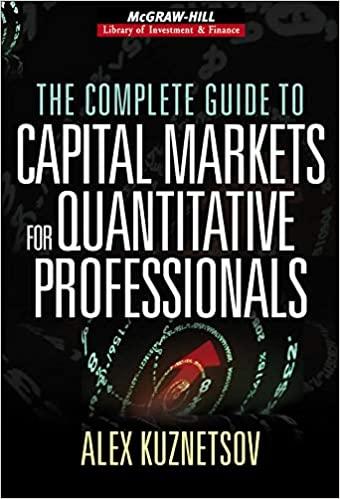Question
An industrial robot has been designed to cut a one-meter rod into three pieces ac-cording to the following algorithm: First the robot chooses a cutting
An industrial robot has been designed to cut a one-meter rod into three pieces ac-cording to the following algorithm: First the robot chooses a cutting point X somewhere along the length of the rod, completely at random and with a continuous uniform distribution over the entire rod. A cut is made at the point X, dividing the rod into the two pieces [0,X] and [X,1]. Then the robot takes the left-most piece [0,X] and chooses a second cutting point Y at random, uniformly distributed from 0 to X. A cut is made at Y, resulting in the three pieces [0,Y], [Y,X], and [X,1]. The robot then places the [0,Y] piece into a bin labeled Left, the [Y,X] piece into a bin labeledMiddle, and the [X,1] piece into a bin labeled Right. Note that the second cut-point Y is always to the left of the first cut-point X, and that the lengths of the three pieces are random and sum to 1.Suppose that the robot repeats this process on a million rods, with the random choices for X and Y on each rod being independent of the cut-locations on the other rods. At the end of this process, there are a million pieces sitting in the Left bin. A probabilist colleague of yours has told you that if you calculate the arithmetic average of the lengths of the million pieces in the Leftbin, the average length will be very close to 0.25 meters, but that half of the Left pieces will be shorter than 0.1867 meters. Is she correct?

PLEASE SHOW ALL WORK THANKS!
Problem 4. An industrial robot has been designed to cut a one-meter rod into three pieces ac- cording to the following algorithm: First the robot chooses a cutting point X somewhere along the length of the rod, completely at random and with a continuous uniform distribution over the entire rod. A cut is made at the point X, dividing the rod into the two pieces (0,X] and [X,1]. Then the robot takes the left-most piece (0,X] and chooses a second cutting point Y at random, uniformly distributed from 0 to X. A cut is made at Y, resulting in the three pieces (0,Y], [Y,X], and [X,1]. The robot then places the [0,Y] piece into a bin labeled Left, the [Y,X] piece into a bin labeled Middle, and the [X,1] piece into a bin labeled Right. Note that the second cut-point Y is always to the left of the first cut-point X, and that the lengths of the three pieces are random and sum to 1. Suppose that the robot repeats this process on a million rods, with the random choices for X and Y on each rod being independent of the cut-locations on the other rods. At the end of this process, there are a million pieces sitting in the Left bin. A probabilist colleague of yours has told you that if you calculate the arithmetic average of the lengths of the million pieces in the "Left bin, the average length will be very close to 0.25 meters, but that half of the Left pieces will be shorter than 0.1867 meters. Is she correct? Problem 4. An industrial robot has been designed to cut a one-meter rod into three pieces ac- cording to the following algorithm: First the robot chooses a cutting point X somewhere along the length of the rod, completely at random and with a continuous uniform distribution over the entire rod. A cut is made at the point X, dividing the rod into the two pieces (0,X] and [X,1]. Then the robot takes the left-most piece (0,X] and chooses a second cutting point Y at random, uniformly distributed from 0 to X. A cut is made at Y, resulting in the three pieces (0,Y], [Y,X], and [X,1]. The robot then places the [0,Y] piece into a bin labeled Left, the [Y,X] piece into a bin labeled Middle, and the [X,1] piece into a bin labeled Right. Note that the second cut-point Y is always to the left of the first cut-point X, and that the lengths of the three pieces are random and sum to 1. Suppose that the robot repeats this process on a million rods, with the random choices for X and Y on each rod being independent of the cut-locations on the other rods. At the end of this process, there are a million pieces sitting in the Left bin. A probabilist colleague of yours has told you that if you calculate the arithmetic average of the lengths of the million pieces in the "Left bin, the average length will be very close to 0.25 meters, but that half of the Left pieces will be shorter than 0.1867 meters. Is she correctStep by Step Solution
There are 3 Steps involved in it
Step: 1

Get Instant Access to Expert-Tailored Solutions
See step-by-step solutions with expert insights and AI powered tools for academic success
Step: 2

Step: 3

Ace Your Homework with AI
Get the answers you need in no time with our AI-driven, step-by-step assistance
Get Started


